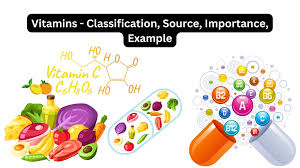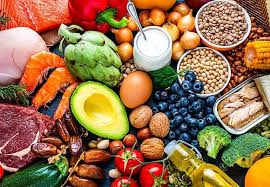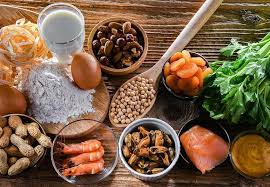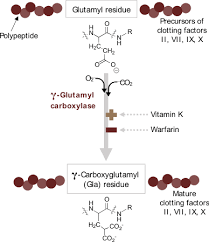Vitamins, whether obtained from dietary sources or synthesized, play crucial roles in human and livestock health. Their significance is evident in the discovery of deficiency symptoms, syndromes, and toxicity conditions.
Understanding the role of vitamins in agriculture enhances knowledge of their biochemical functions and their impact on animal nutrition.
Read Also: Various Types Of Fruits And Their Nutritional Value
Definition and Classification of Vitamins

Vitamins are organic nutrients required in small quantities for various biochemical functions. They cannot be synthesized by the body and must be obtained from the diet.
The absence or deficiency of vitamins leads to specific deficiency diseases, which can be prevented by consuming a diverse and adequate diet. Many vitamins are destroyed by oxidation, a process accelerated by heat, light, and metals such as iron.
Some compounds function as vitamins only after undergoing chemical changes; these are known as provitamins or vitamin precursors.
Vitamins are classified based on their solubility into:
- Water-Soluble Vitamins
2.Fat-Soluble Vitamins
Excess water-soluble vitamins are excreted in urine, reducing the risk of toxicity. However, these vitamins must be supplied regularly due to limited storage capacity in the body. Fat-soluble vitamins, on the other hand, can be stored in the body, and excessive intake may lead to toxicity, known as hypervitaminosis.
Water-Soluble Vitamins and Their Functions

Water-soluble vitamins include Vitamin B-complex and Vitamin C.
1. Vitamin B-Complex: The Vitamin B-complex consists of multiple vitamins essential for animal nutrition. These vitamins function as co-factors, which are non-protein compounds necessary for enzymatic reactions. Deficiency of a single B-complex vitamin is rare, but specific deficiency syndromes exist.
Table 1: B-Complex Vitamins and Their Chemical Names
| Vitamin | Chemical Name |
|---|---|
| B1 | Thiamin |
| B2 | Riboflavin |
| B3 | Niacin (nicotinic acid, nicotinamide) |
| B5 | Pantothenic acid |
| B6 | Pyridoxine (Pyridoxal, Pyridoxamine) |
| B12 | Cobalamin (Cyanocobalamin) |
| – | Choline, Biotin, Folic Acid |
Table 2: Deficiency Syndromes of B-Complex Vitamins
| Vitamin | Deficiency Syndrome |
|---|---|
| Thiamin | Beriberi |
| Riboflavin | Cheilosis, Glossitis, Seborrhea, Photophobia |
| Niacin | Pellagra |
| Pyridoxine | Peripheral neuritis |
| Cobalamin | Megaloblastic anemia, Methylmalonic Aciduria |
| Folic Acid | Megaloblastic anemia |
Table 3: Enzymes and Prosthetic Groups Involving B-Vitamins
| Vitamin | Coenzyme or Prosthetic Group | Enzymic Function |
|---|---|---|
| Thiamin | Thiamin diphosphate (TDP) | Oxidative decarboxylation |
| Riboflavin | Flavin mononucleotide (FMN), Flavin adenine dinucleotide (FAD) | Hydrogen carrier |
| Niacin | Nicotinamide adenine dinucleotide (NAD), Nicotinamide adenine dinucleotide phosphate (NADP) | Hydrogen carrier |
| Pyridoxal | Pyridoxal phosphate | Transaminases and decarboxylases |
| Pantothenic acid | Coenzyme A (CoA) | Acyl transfer |
| Folic Acid | Tetrahydrofolic acid | One-carbon transfer |
| Biotin | Biotin | Carbon dioxide transfer |
| Cobalamin | Adenyl cobalamide | Group transfer |
a. Vitamin B1 (Thiamin)
i. Sources: Found in brewer’s yeast, unrefined cereal grains, beans, peas, green leafy crops, egg yolk, kidney, and pork muscle.
ii. Deficiency Symptoms: Loss of appetite, emaciation, muscular weakness, and nervous system dysfunction.
b. Vitamin B2 (Riboflavin)
i. Sources: Present in yeast, liver, kidney, milk (especially whey), and leafy crops.
ii. Deficiency Symptoms: Poor appetite, growth retardation, vomiting, skin eruptions, eye abnormalities, poor reproduction in sows, and curled toe paralysis in chicks.
c. Vitamin B3 (Niacin)
i. Sources: Found in liver, yeast, groundnut, sunflower meals, and tryptophan-rich foods like milk and eggs.
ii. Deficiency Symptoms: Poor growth, enteritis, dermatitis, bone disorders, and inflammation of the mouth and upper esophagus.
d. Vitamin B5 (Pantothenic Acid)
i. Sources: Liver, egg yolk, groundnuts, peas, yeast, animal tissues, and molasses.
ii. Deficiency Symptoms: Slow growth, diarrhea, hair loss (alopecia), scaly skin, “goose stepping” in pigs, retarded growth, and dermatitis in chicks.
e. Vitamin B6 (Pyridoxine, Pyridoxal, Pyridoxamine)
i. Sources: Widely distributed in yeast, liver, mackerel, milk, avocados, eggs, meat, pulses, and cereal grains.
ii. Deficiency Symptoms: Uncommon in farm animals. In poultry, symptoms include jerky movements in chicks and poor hatchability and egg production in adult birds. In pigs, deficiency may lead to reduced appetite and anemia.
Understanding the role of vitamins and their biochemical functions is essential in agriculture, as they directly influence the health and productivity of livestock. Proper dietary management ensures adequate vitamin intake, preventing deficiencies and promoting overall animal well-being.
2. Folic Acid
Folacin is the generic name covering folic acid and related substances with folic acid activity. Folic acid or folate consists of the base pteridine attached to one molecule each of p-aminobenzoic acid (PABA) and glutamic acid. In the form of tetrahydrofolate (H4 folate), folic acid functions as a coenzyme.
i. Sources: Folic acid is widely distributed in nature and is found in green leafy materials, cereals, extracted oil seed meals, and animal protein sources.
ii. Deficiency Symptoms: Deficiency of folic acid is characterized by nutritional anemia and poor growth.
3. Biotin
Chemically, biotin is 2-keto-3,4 imidazolido-2-tetrahydrothiophene-n-valeric acid. It serves as a coenzyme of carboxylase enzymes that catalyze the transfer of carbon dioxide from one substrate to another.
i. Sources: Biotin is found in liver, yeast, milk, and vegetables.
ii. Deficiency Symptoms: Biotin deficiency leads to foot lesions, alopecia (hair loss), and dry scaly skin in pigs. In poultry, it results in reduced growth, dermatitis, cracked feet, poor feathering, and fatty liver and kidney syndrome (FLKS). Biotin deficiency can be induced by avidin, a protein present in raw egg white, which binds with biotin, preventing its absorption.
4. Choline
Unlike other B vitamins, choline does not function as a metabolic catalyst but forms an essential component of body tissues. It is a component of lecithins, which are crucial for cellular structure and lipid metabolism in the liver. Choline can be synthesized in the liver from methionine.
i. Sources: Choline is abundant in green leafy materials, yeast, egg yolk, and cereals.
ii. Deficiency Symptoms: Deficiencies include slow growth and fatty infiltration of the liver in chicks and pigs.
5. Vitamin B12 (Cobalamin)
Cobalamin has a complex ring structure with a central cobalt ion. The commercial form is cyanocobalamin. It is a significant coenzyme in gluconeogenesis.
i. Sources: Cobalamin is synthesized exclusively by microorganisms and is only found in animal-based foods such as liver.
ii. Deficiency Symptoms: Deficiency symptoms include severe growth retardation and high mortality in young growing animals.
6. Vitamin C (Ascorbic Acid)
Vitamin C is chemically similar to glucose, from which it is derived in most mammals. It is a colorless, crystalline compound whose degradation is accelerated by exposure to light.
i. Sources: Citrus fruits and green leafy vegetables are rich sources of vitamin C. Synthetic ascorbic acid is also available.
ii. Deficiency Symptoms Vitamin C deficiency leads to scurvy, characterized by edema, emaciation, and diarrhea. Collagen formation failure results in defects in bones, teeth, cartilage, connective tissues, and muscles.
Read Also: The Alfalfa Petals: Economic Importance, Uses, and By-Products
Fat-Soluble Vitamins

Fat-soluble vitamins require normal fat absorption for efficient utilization.
Table: Functions and Deficiency Syndromes of Fat-Soluble Vitamins
| Vitamin | Functions | Deficiency Syndrome |
|---|---|---|
| Vitamin A (Retinol) | Vision | Night Blindness, Xerophthalmia |
| Vitamin D | Calcium and Phosphate Metabolism | Rickets, Osteomalacia |
| Vitamin E | Antioxidant | Neurological disorders, anemia |
| Vitamin K | Blood clotting | Bleeding, Hemorrhage |
1. Vitamin A (Retinol)
Vitamin A (C20H29OH) is a generic term for compounds from animal sources that exhibit vitamin A activity. These include retinol, retinoic acid, and retinaldehyde. In plants, vitamin A exists as a provitamin in the form of β-carotene.
i. Sources: Green vegetables, carrots, tomatoes, and yellow maize are rich in β-carotene.
**ii. Deficiency Symptoms: ** Deficiency results in night blindness, xerophthalmia, keratinization of epithelial tissues, and fertility disorders such as retarded ovulation and early embryonic mortality.
2. Vitamin D
Vitamin D is a steroid prohormone existing in different forms: Vitamin D2 (ergocalciferol) is derived from plants, while Vitamin D3 (cholecalciferol) is synthesized in animals through sun exposure.
i. Sources: Vitamin D is limited in distribution, occurring in small amounts in certain animal tissues and fish liver oils. Feeds for pigs and poultry contain little or no vitamin D and require supplementation.
ii. Deficiency Symptoms: Deficiency in young animals results in rickets, leading to weak and deformed bones. In older animals, it causes osteomalacia, where calcium and phosphorus are reabsorbed from bones, making them brittle.
3. Vitamin E (Tocopherol)
Vitamin E is an antioxidant that protects against lipid peroxidation in cell membranes. It works in synergy with selenium to reduce oxidative stress.
i. Sources: Vitamin E is widely found in green fodder and cereals. Animal products are poor sources.
ii. Deficiency Symptoms
Deficiency causes reproductive failures and muscular degeneration. In lambs, it leads to “white muscle disease” and “stiff lamb disease.” In pigs, symptoms include muscular weakness and liver damage, while in poultry, deficiency leads to muscular dystrophy and encephalomalacia (crazy chick disease).
4. Vitamin K
Vitamin K, also known as the “coagulation factor,” prevents hemorrhagic symptoms. The two primary natural forms are vitamin K1 (phylloquinone) from plants and vitamin K2 (menaquinone), synthesized by bacteria.
i. Sources: Vitamin K1 is found in green leafy vegetables like kale and cabbage. Animal sources include egg yolk, liver, and fish meal. Vitamin K2 is produced by bacteria in the digestive tract.
ii. Deficiency Symptoms:
Deficiency causes anemia and delayed blood clotting in chicks, making them prone to bleeding. Poultry cannot absorb bacterial vitamin K, except through coprophagy (ingestion of feces).
Vitamins are essential organic nutrients required in small quantities for biochemical functions. Since they cannot be synthesized by the body, they must be supplied through diet. Deficiencies lead to characteristic diseases detrimental to livestock management.
To prevent deficiencies, farmers should provide a varied diet rich in essential vitamins. Vitamin losses due to oxidation can be minimized by controlling exposure to heat, light, and metals like iron during feed processing and storage.
Do you have any questions, suggestions, or contributions? If so, please feel free to use the comment box below to share your thoughts. We also encourage you to kindly share this information with others who might benefit from it. Since we can’t reach everyone at once, we truly appreciate your help in spreading the word. Thank you so much for your support and for sharing!

